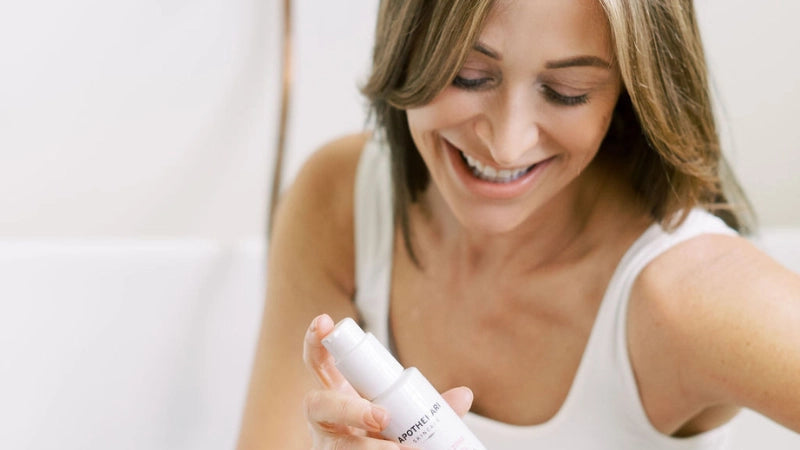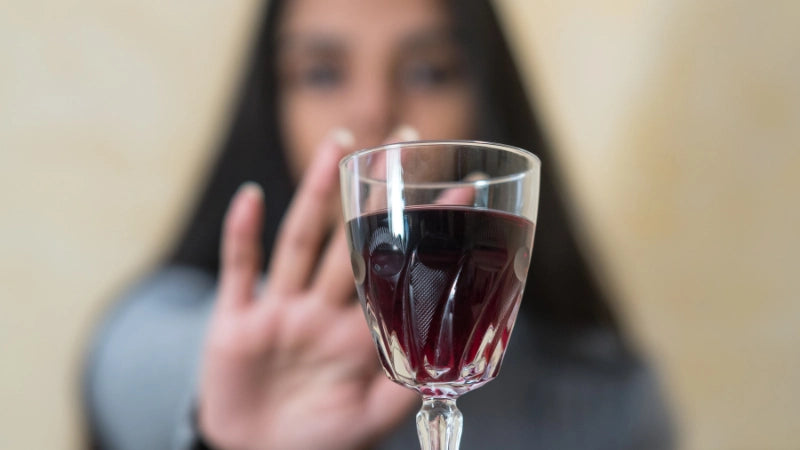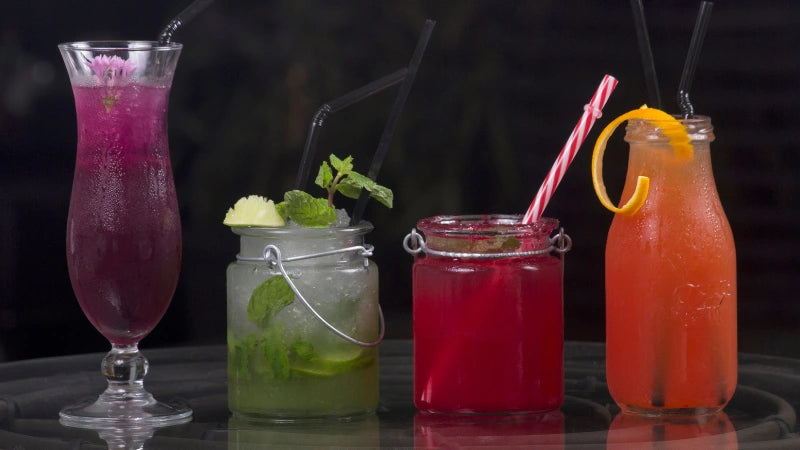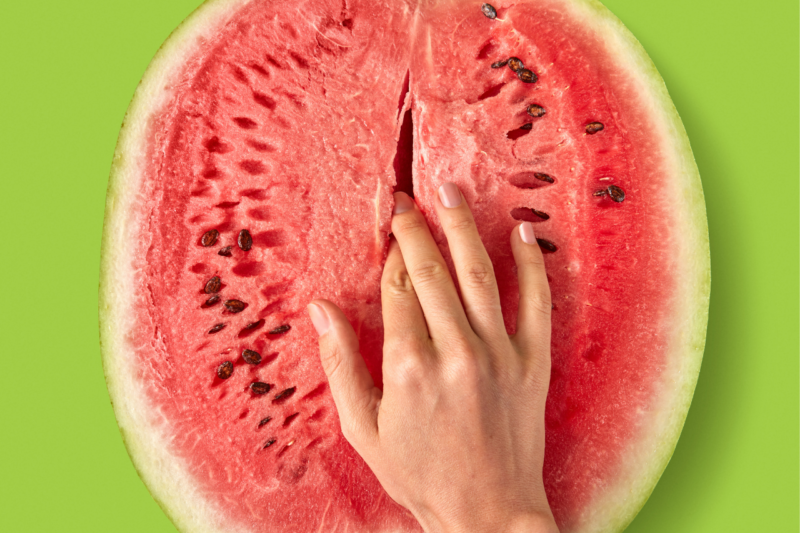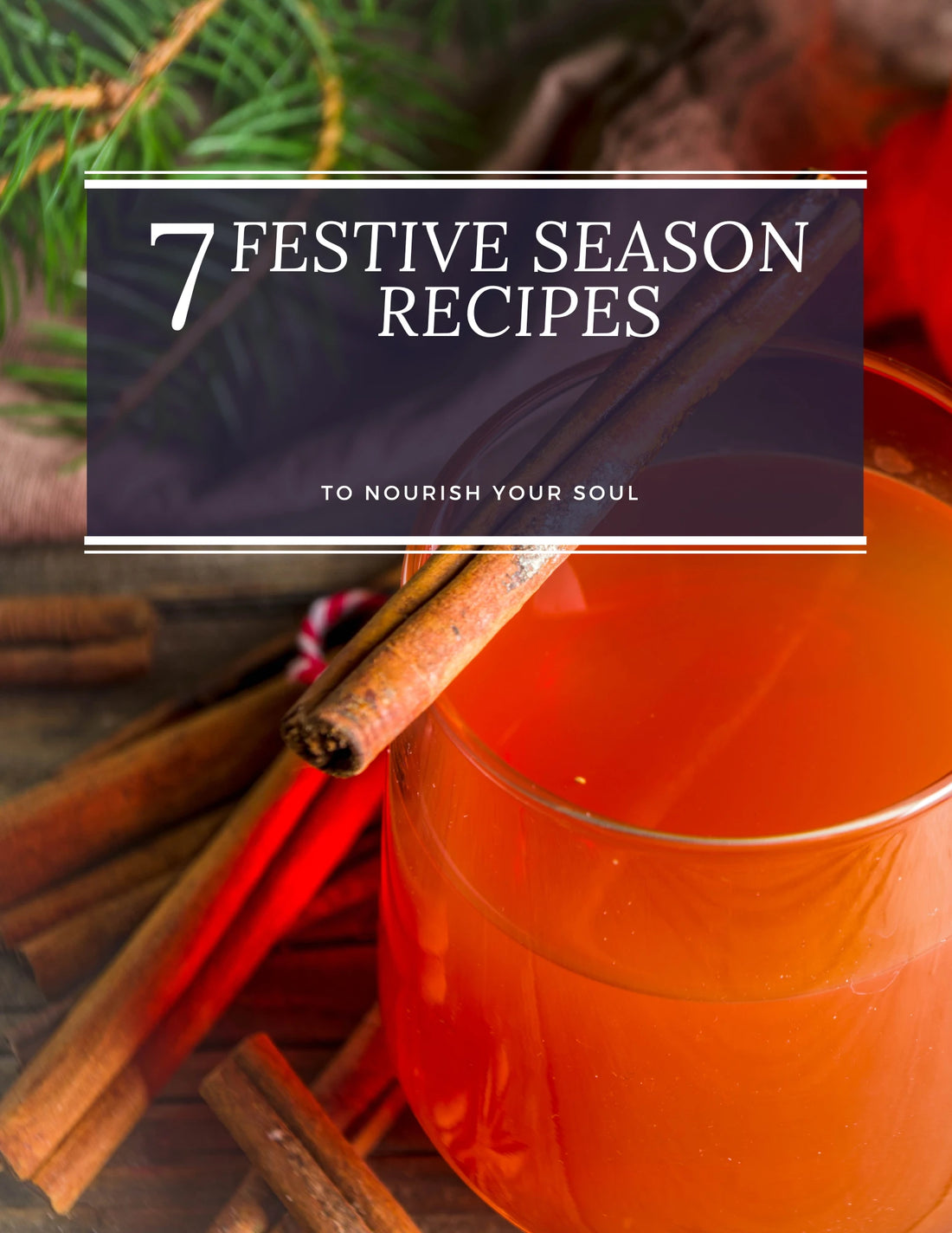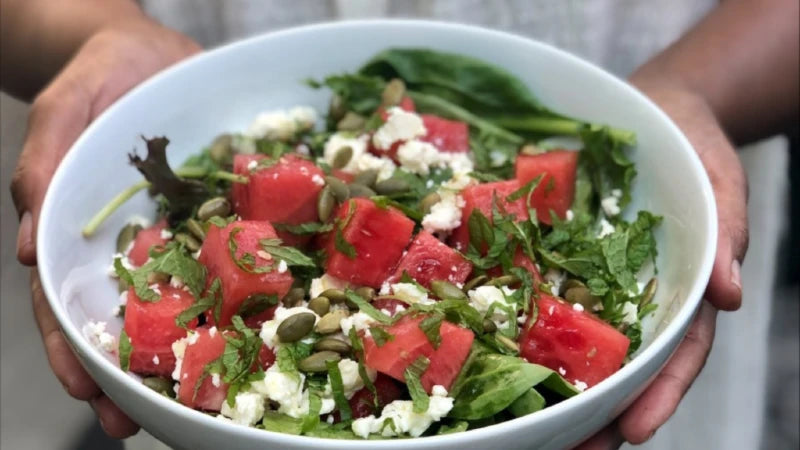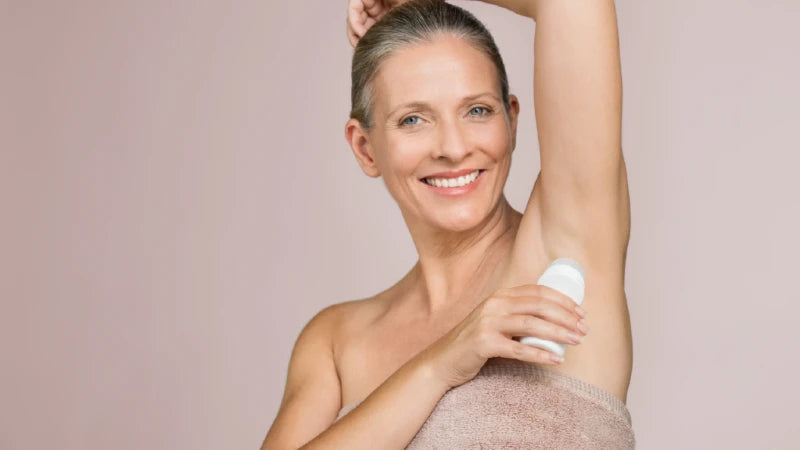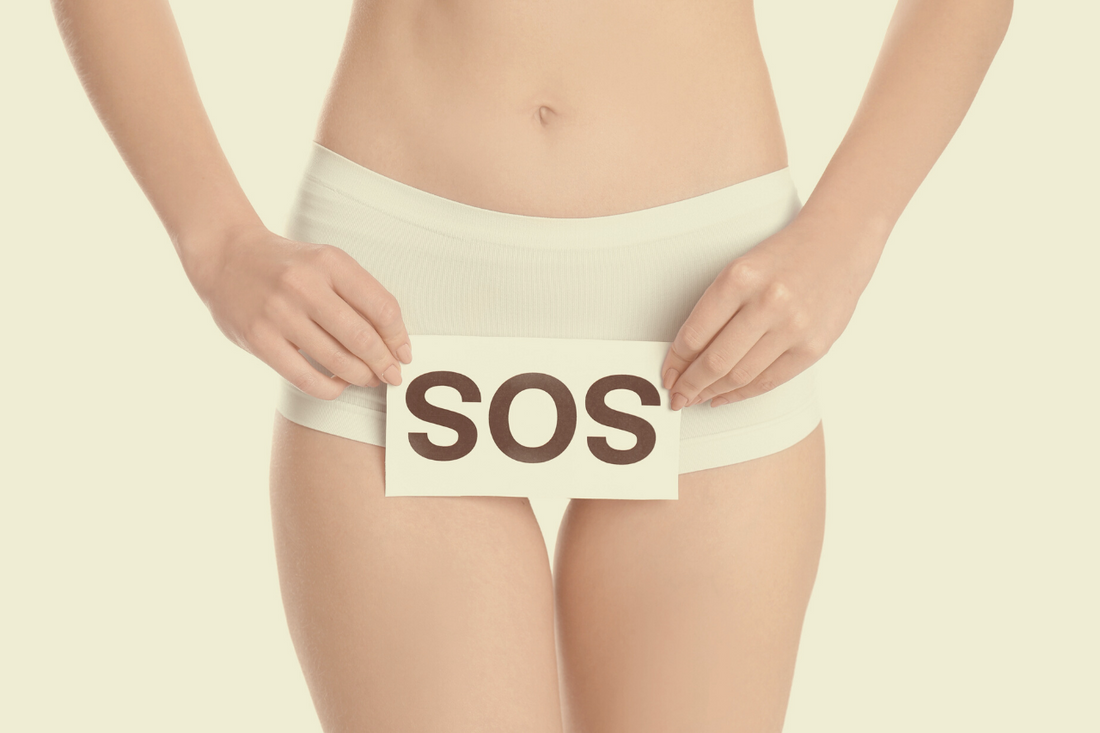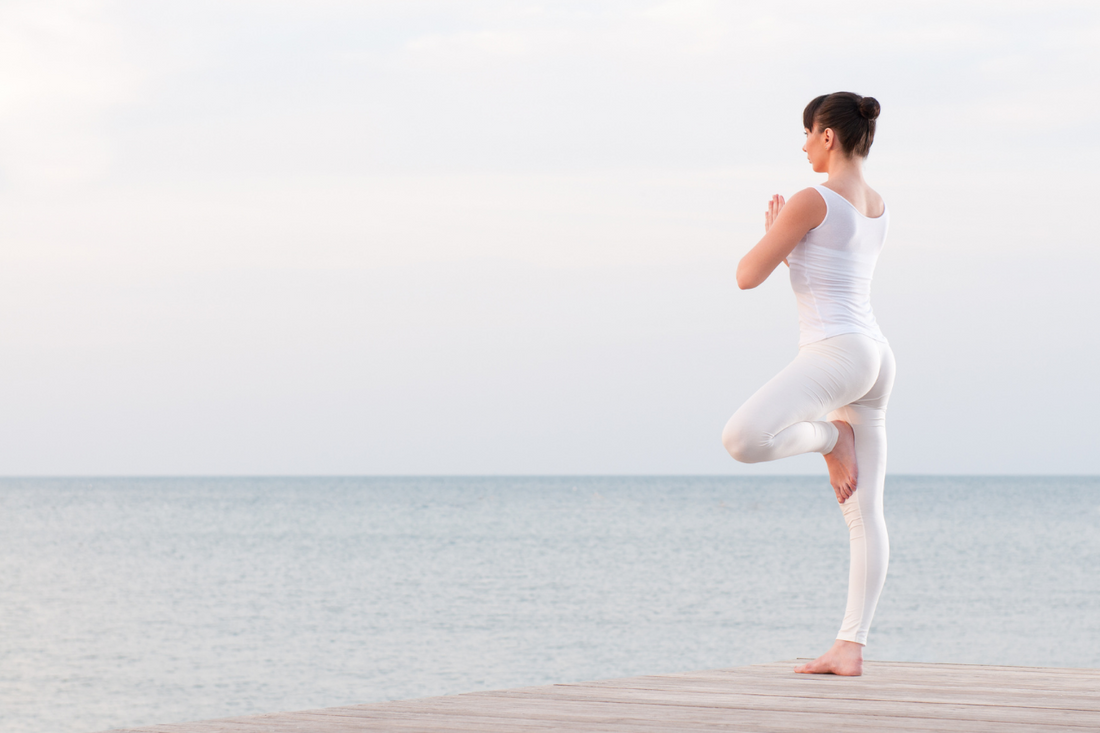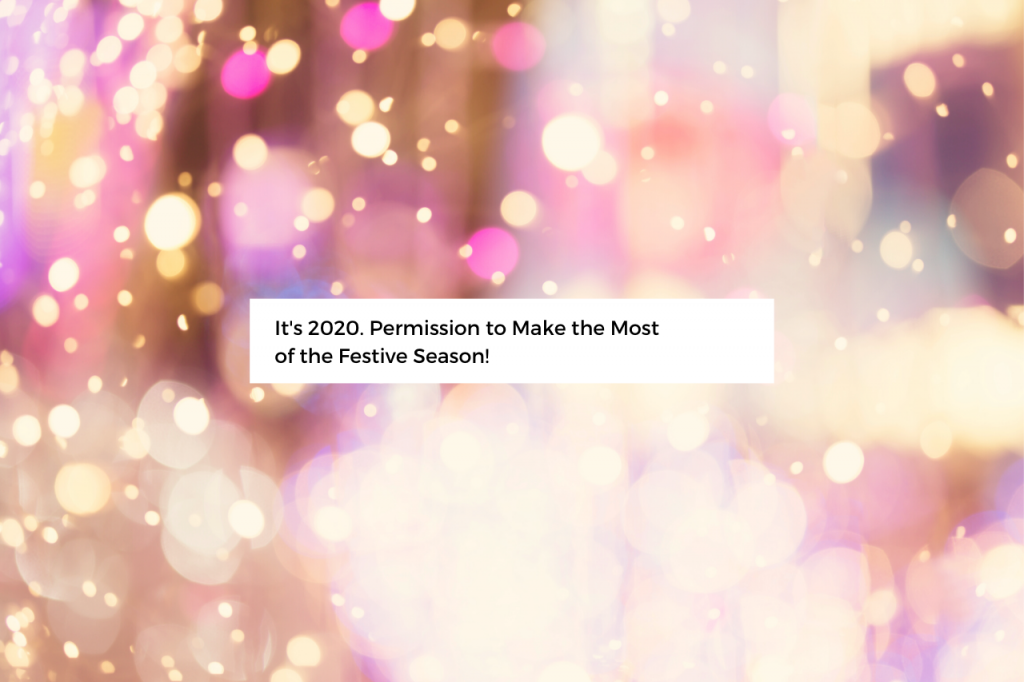Blog
Skincare is Self Care. Make it a Ritual.
Skincare is selfcare? It’s an often cited mantra that we hear these days. Yet in the hustle and bustle of our daily lives, when we’re trying to juggle so many different things, it’s easy to overlook the significance of our skincare routine. Shop All Apothekari But what if I told you that your skincare regimen is more than just a series of steps to maintain healthy skin? It’s also a self-care ritual—an act of kindness you show to yourself daily. Your skin, the body’s largest organ, deserves attention beyond the superficial, and this attention can manifest as a deeply enriching experience. Your skincare routine should be more than a task; it should be something you genuinely enjoy. Consider it an opportunity to engage in a ritual that provides benefits not only to your skin but also to your mind and overall well-being. The importance of establishing routines lies in the sense of predictability they bring. As your skincare routine becomes a consistent part of your day, it transforms into a source of comfort, a predictable retreat in an otherwise chaotic world. Picture this: you’re in your bathroom, perhaps with your favorite calming playlist in the background. The gentle application of skincare products becomes a form of self-love, a few moments dedicated entirely to yourself. It’s an almost meditative experience, a pause in the daily hustle to reconnect with your body and send a powerful message that you matter. Elevate Your Skincare Practice with These Tips Now, let’s infuse some magic into your skincare routine with these tips to turn it into a full-fledged self-care celebration: Set the Mood with Relaxing Music. Transform your skincare space into a personal sanctuary by playing your favorite tunes. Let the soothing sounds create a spa-like ambiance. Meditate Your Way to Glowing Skin. Elevate your routine with a guided meditation app. Combine the benefits of skincare with the tranquility of meditation for a truly holistic experience. Indulge in a Luxurious Bath. Take your self-care routine up a notch by indulging in a long bath, scrubbing away roughness with our Foaming Bamboo Polish, followed by our Shea Body Butter. It’s a sensory delight that locks in moisture and leaves you feeling pampered. Enjoy the Art of Skincare. Embrace the simple steps, like massaging a serum or our Antioxidant Face Oil into your skin. These moments of self-massage not only benefit your skin but are also incredibly relaxing for your mind and body. 7 Science-Backed Self-Care Ideas For You to Embrace I’m not messing around, cause these are seven science-backed self-care ideas that can seamlessly integrate into your daily, weekly, or even hourly schedule. The good news? They’ll not only help you to feel better–and when you feel better, you’ll look better too: Get Outside. Step into nature to reap its meditative benefits while also incorporating some exercise into your routine. Pay it Forward. Spread joy by helping others, whether it’s through giving your time, money, or a heartfelt compliment. The positive energy you share will, in turn, uplift your spirits. Stress Less. While stress is inevitable, find strategies to manage it. Whether it’s a brief tea break or some alone time, these moments contribute to your overall well-being. Be Mindful. Practice being present, steering clear of worries about the past or anxieties about the future. Mindfulness can significantly enhance your mental health. Dance. Burn calories and boost your mood with a spontaneous dance party—perhaps even while prepping dinner. It’s a fun and effective way to stay active. Eat More Fruits and Veggies. Fuel your body with a rainbow of nutrient-rich foods, providing antioxidants, micronutrients, and fiber essential for good health. Get Enough Zzzs. Prioritize sleep, even if it’s just a quick cat nap. Quality sleep is linked to a myriad of health benefits, from improved mood to reduced risk of chronic conditions. Is Skincare a Form of Self-Love? Absolutely! Your skincare routine is a daily affirmation of self-love, a consistent practice that highlights your importance amidst life’s chaos. Why is Skincare Important to Life? Skincare transcends mere aesthetics; it’s a form of self-nurturing that sends a powerful message to your body: you value and care for it. Can Skincare Boost Self-Esteem? Indeed. A thoughtful skincare routine can boost self-esteem by fostering a positive self-image and instilling a sense of self-worth. Is Skincare Part of Your Lifestyle? If it isn’t it absolutely should be! Integrating skincare into your daily routine enhances your lifestyle, creating pockets of self-indulgence and care throughout your day. Benefits of Skincare on Mental Health Beyond its physical effects, skincare has an impact on mental health, offering moments of tranquility and self-reflection. Your skincare ritual becomes a daily dose of mindfulness, contributing to a healthier state of mind. As you embark on this journey of skincare as self-care, remember: it’s not just about looking good; it’s about feeling good, embracing moments of tranquility, and sending a powerful message to yourself that you are worthy of love, care, and radiant skin. Your skincare ritual is your daily celebration of self, a small yet significant act that contributes to your overall well-being. So, let the magic of skincare and self-care unfold each day, making you feel as beautiful on the inside as you look on the outside. Cheers to a healthier, happier you!
Learn moreDry January: Are You Missing Out?
Welcome to that time of the year when wine glasses take a back seat, and water bottles step into the spotlight. For me, it’s the seventh spin on the Dry January train—a tradition that started with a classic hub-side eye-roll, questioning my sanity. Little did he know; he secretly looks forward to it every year. Or maybe he’s just a really good actor! What’s the Buzz with Dry January? So, why Dry January, you ask? Well, it’s my post-holiday ‘cleanse’—and I use the term loosely. After a month of indulging in festive foods and perhaps a tad too much wine, January becomes my month of redemption. Out go the cheese, wine and shortbread cookies; in come veggies and water. It’s all in an attempt to squeeze into my favorite jeans without having to go up a size. Because, let’s face it, my wardrobe and I are inseparable BFFs, and I’m not about to betray it. (and yes, there’s the undeniable benefit of just feeling better nourishing my body with healthier options) The Dry January Elevator Pitch Abstaining from alcohol is the easy part. Explaining it? Now, that’s the real challenge. “No, I’m not pregnant. It’s just a miracle I’m still standing at my age!” It took a while, but I’ve perfected my Dry January elevator pitch over the years. What is the Point of Dry January? Dry January isn’t just about swapping out alcoholic beverages for non-alcoholic delights. For me, it’s a personal reset button, a chance to recalibrate after the holiday frenzy. It’s an opportunity to focus on nourishing my body with veggies and hydrating with water, all while giving my skin the love it deserves. Why Do They Call it Dry January? The name might sound straightforward, but the origins of Dry January are rooted in mindfulness. It started in the UK as a movement to encourage people to be more conscious of their alcohol consumption after the indulgent holiday season. The trend has since spread globally, with many embracing the challenge as a way to kickstart a healthier year. What are the Rules for Dry January? The rules are simple: no alcohol for the entire month of January. It’s a commitment to sobriety for 31 days, allowing your body to reset. It’s not about perfection but about the intention to break the habit of regular alcohol consumption. (and goodness knows, we’ve read enough articles lately about the negative impact of excessive alcohol consumption on our wellbeing). Dry January Benefits Aside from the obvious health benefits like improved liver function and better sleep, Dry January can do wonders for your skin. Alcohol can dehydrate the skin, leading to dullness and premature aging. Dry January Skin Benefits Beyond the general health perks, the impact on your skin can be quite noticeable. One of the key benefits is the restoration of skin hydration. Alcohol is very dehydrating and as a result, notorious for drying out the skin. This often causes dullness and the acceleration of premature aging. By abstaining from alcohol, you’re allowing your skin to reclaim its moisture, leading to a radiant and healthier complexion. What are the Disadvantages of Dry January? While the advantages outweigh the disadvantages, some may find social situations challenging without the usual social lubricant. However, navigating these situations sober can lead to personal growth, increased confidence, and a deeper connection with others. You’ll never know unless you try it! My Dry January Sippers Just because I’ve gone alcohol free, it doesn’t mean I don’t want something special to sip on. Thankfully, we’re pretty spoiled for choice when it comes to prepared mocktails, zero proof beers and even some wine–but there’s still a way to go in that department. Besides the standard bubbly water and Coke Zero in our fridge, I’m currently savoring Sober Carpenter’s incredible IPA. I’ve also delved into the world of Clever Mocktails—a collection of delectable, not overly sweet concoctions. (Check out their G and T or Mojito). Unfortunately–and sadly–because I love red wine, I think they still have a way to go before one will pierce my Dry January heart. I have had luck with some sparkling wines made by Noughty and Oddbird have left a pleasant impression. I think sparkling is definitely the way to go here! And, of course, my inner mixologist makes an appearance in my spare time—blame it on the pharmacist in me! For the behind-the-scenes magic, check out my Instagram where I will be sharing any concoctions I come up with. And, check out our last post, where I shared the recipes for 3 mocktails that you may want to try making yourself. Now I know that Dry January isn’t for everyone. And if that’s the case, there’s no judgement here—you do you! But, if you decide to participate, you may be pleasantly surprised by how you feel after a month without alcohol. Got any stories to share? We’re all ears!
Learn more3 Mocktails to Help You Celebrate the Season
Ready for a journey into the world of mocktails? Fantastic! Grab your favorite mug because we’re about to dive into the ultimate guide to mocktails—a celebration of flavor, wellness, and pure joy. Why Choose Mocktails Over an Alcoholic Drink? In a world where choices abound, we’ve got you covered with recipes for 3 mocktails that you can indulge with this season. Let’s explore the perks, from maintaining a clear head to being the life of the party without the morning-after regrets. Say goodbye to hangovers and hello to vibrant mornings! What is the Most Popular Non-Alcoholic Drink? While a decade ago, finding low-alcohol or no-alcohol drinks meant sipping on a glass of regular—fizzy if you were lucky—water, more and more interesting options are becoming available. In addition to low or no-alcohol beers, you can also find alcohol-free wines and spirits. Gin, vodka, rum, tequila, and even liqueurs; the selection continues to grow. Whether you opt for (naturally alcohol-free) kombucha or a craft beer, you’re bound to be spoiled for choice. Read reviews as there is a staggering amount to choose from and not all are created equally. I have tried some rather hideous red wines and spirits. But been pleasantly surprised by some sparkling wines and Indian Pale Ales. When it comes to mocktails themselves, some of the ones most requested include: Margarita Spritzers (sparkling water with flavor) Shirley Temple Pina Colada Grapefruit Rosemary Soda What is the Basic Mocktail Formula? If you want to become a master mixologist, then you’ll want to know the ‘secret’ behind crafting the perfect mocktail. Spoiler alert: It’s all about balance. The standard cocktail ratio of two parts alcohol, one part sour, and one part sweet doesn’t quite work without the alcohol. But there’s a formula that does: four parts base, like club soda or iced tea, to go with one part sour and one-half part sweet. Other ideas for a base include coconut water or an alcohol-free spirit. How Do You Add Bitterness to Mocktails? You can try adding bitters (though keep in mind that they often contain alcohol, but it will be in a very small amount since you’ll likely only be adding a few drops). For something that is 100% alcohol-free, you can try oversteeped tea. Get Ready for 3 Refreshing and Low Sugar Mocktails 1. Cucumber Mint Sparkler: – 1 cup cucumber juice – 1/2 cup mint leaves, muddled – 1 tablespoon lime juice – Sparkling water – Garnish: Thin cucumber slices, Sprig of fresh mint Muddle mint leaves in the bottom of a glass. Add cucumber juice and lime juice. Fill the glass with ice and top it off with sparkling water. Stir gently and garnish with cucumber slices and a mint sprig. Sip and savor the cool vibes! 2. Ginger Citrus Fizz: – 1 cup ginger ale (use sugar-free if you’re trying to cut down on sugar or calories) – 1/2 cup orange juice – 1 tablespoon lemon juice – Ice cubes – Garnish: Thin lemon and orange slices, Candied ginger Fill a glass with ice cubes. Pour in ginger ale, orange juice, and lemon juice. Give it a gentle stir and garnish with citrus slices and a touch of candied ginger. Get ready for a zesty fiesta! 3. Virgin Bloody Mary: – 2 ½ cups of tomato juice – 4 tablespoons of green olive brine – 1 garlic clove – 1-2 teaspoons of hot sauce (omit if you don’t like spicy) – ½ of a medium cucumber, peeled and chopped – 1 celery rib, chopped – Juice of ½ of a lemon – 1 teaspoon of horseradish – 1 teaspoon of Worcestershire sauce (optional) – Ice – Green olives for garnish – Celery for garnish In a blender or food processor, add the tomato juice, olive brine, cucumber, celery, lemon juice, garlic clove, horseradish, hot sauce, and Worcestershire sauce (if using) and blend until smooth. Pour over a glass of ice and garnish with celery and green olives. *For best results, chill your juices and veggies in the fridge before blending them together. I’ve also been playing with my own combinations. An easy one is to mix in a blend of lemon and orange juice and top with club soda. So refreshing and so good! Which of these mocktails will you be making next? Or do you have any of your own to share? Let us know!
Learn moreIs There Such a Thing As Wine Face?
Every year, after the holidays, I look at my skin and wonder—am I suffering from wine face? As much as I love the holiday season, I’m always a bit happy to be done with the busyness and indulgence that accompany it. Shop All Apothekari Don’t get me wrong – I love chocolates and wine as much as the next person but when January rolls around, I start to crave fresh, crispy salads, juicy berries and regular yoga classes. In addition to the few extra pounds that often seem to creep up on you during the season of excess, you may notice that your skin isn’t looking as fresh and dewy as normal. May I introduce “wine face”? What is Wine Face? “Wine face” is a term coined by a London naturopath to describe the effects of alcohol consumption on the skin. Along with gluten face, dairy face, and sugar face, wine face outlines the negative impact of different foods on your appearance. Wine face typically happens to those who consume one or two glasses of wine most nights of the week, although it can be triggered by consuming any type of alcohol. What Causes Wine Face? Alcohol consumption impacts your body in many ways, including the appearance of your skin. When you drink alcohol, it’s metabolized in the liver, which produces a toxic substance called acetaldehyde. This substance is responsible for many of the negative effects associated with alcohol, including the dilation of the delicate capillaries of the cheeks and nose, drawing blood to the surface of the skin and leading to facial redness and puffiness. With frequent alcohol consumption, the face may attain a permanent ruddy appearance. Alcohol consumption is also dehydrating, which can make fine lines and wrinkles look worse. Lastly, alcohol is known to decrease the production of collagen, which is essential for healthy and youthful-looking skin. Collagen gives the skin its strength, elasticity, and firmness. As collagen production decreases, the skin begins to sag, and wrinkles may become more noticeable. What Does a Wine Face Look Like? The main symptoms of wine face include: Lines or redness between the eyes Saggy eyelids Enlarged pores Facial redness Deep laughter lines Dehydrated skin with feathery lines across the cheeks If you see these signs, it’s a good indication that your alcohol consumption is starting to have an impact on your appearance. Can Wine Face Be Reversed? The good news is that wine face is reversible. The first step is to take a short break from alcohol, ideally for three weeks or more, to allow your gut to rebalance. During this time, it’s essential to drink plenty of water to help hydrate your skin. Water is crucial for healthy skin and helps your body to circulate nutrients and get rid of harmful substances that can contribute to skin and other health problems. Once the three weeks are over, get into the habit of consuming alcohol in moderation. Sticking to an 80/20 rule can help you maintain a healthy balance. Abstain from alcohol for 80% of the time, but allow yourself the occasional glass in the remaining 20%. The Impact of Alcohol on Skin Health Alcohol is a known diuretic, which means it increases urine production and leads to dehydration. This dehydration can be detrimental to skin health, as it can cause the skin to look dull and lifeless. It can also exacerbate existing skin conditions such as eczema, psoriasis, and acne. Reducing your alcohol consumption benefits ALL the organs in your body; not just your skin. Excessive alcohol consumption has many other negative health implications, including developing high blood pressure, heart disease, stroke, liver disease, and digestive problems. It also increases your risk of developing cancer of the breast, mouth, throat, esophagus, voice box, liver, colon, and rectum. How to Get Rid of Wine Face? Aside from taking a break from alcohol, there are several other steps you can take to help get rid of wine face. Make sure you’re drinking plenty of water to help hydrate your skin. Water is essential for healthy skin and helps your body to circulate nutrients and get rid of harmful substances that can contribute to skin and other health problems. Eat a healthy diet filled with lots of fruits and vegetables. These foods are rich in antioxidants, which help protect the skin from damage caused by free radicals that can be generated by consuming alcohol. Invest in a good skincare routine. Prep skin with cleansers, protect with sunscreen, prevent damage with antioxidants, and perfect and renew with retinoids. Our Ageless Skin Set contains all the essentials to help keep skin looking healthy and glowing. How Long Does It Take to Get Rid of Wine Face? For most of us, after taking a complete break from alcohol for several weeks, you’ll likely notice a difference to your skin’s appearance. After this, it’s a good idea to avoid consuming it during the week and saving it for the weekends or special occasions. What About Red Wine Face? Red wine face isn’t different or special to “wine face” as the alcohol found in red wine is the same alcohol found in other types of alcoholic beverages. And, sadly, contrary to what the marketers want you to believe, red wine doesn’t have any special properties that help to benefit your health. Wine face is a real thing, and it’s not just a myth. If you’re a regular wine drinker and you notice that your skin isn’t looking as fresh and youthful as it once was, it might be time to take a closer look at your alcohol consumption habits. Remember, the key is moderation. By taking a break from alcohol, drinking plenty of water, eating a healthy diet, and investing in a good skincare routine, you can help get rid of wine face and keep your skin looking healthy and youthful for years to come.
Learn moreDon't Put Up With Vaginal Dryness! This is How to Treat it
Vulvar and vaginal dryness are a common, yet ‘silent’ problem because many women feel embarrassed to talk about it with their partners, friends and even doctors. It can have a really negative impact on quality of life, yet only 25% of women seek help to manage their symptoms. Shop Intimate Care Feminine Moisturizer What is a Natural Remedy for Dry Down There? We’re here to change that and that’s why we’re so excited to share news about More Than Lip Service. You moisturize the rest of your body so why not your vulva and vagina? Our moisturizer helps to treat the symptoms associated with vulvar & vaginal dryness, allowing you to embrace life again. Made with a combination of hyaluronic acid (which your body produces naturally) plus vitamin E and other beneficial ingredients, More Than Lip Service gives you fast, long-lasting & hormone-free relief from the burning, itching & pain associated with vaginal atrophy, vulvar and vaginal dryness. Unlike those other lubricants that just slip right out, ours not only immediately alleviates dryness symptoms but also lasts so long, you may not even need to use it every day. Why Am I Dry Down There All of a Sudden? Over half of women aged between 51 and 60 experience vulvar & vaginal dryness, leading to pain, irritation and burning. While it’s more common in older women, younger women aren’t immune. Around 17% of women aged 18-50 experience issues, even before menopause. The hormonal changes associated with aging—in general, a decline in estrogen levels—is the main cause, but feminine sprays and harsh soaps, swimming pool & hot tub chemicals, detergents, and some medications can also lead to vaginal dryness. It may also be problematic during sexual intercourse, resulting in pain along with intimacy issues. What Causes Vaginal Dryness? A normal, healthy vagina: Is kept supple and moist with natural lubrication produced by glands at the neck of the womb (the cervix). This moisture makes its way slowly down through the vagina, keeping it clean and removing dead cells. The moisture is slightly acidic, helping to keep the area, including the vulva and the labia healthy, preventing infections like thrush. Most women may notice a slight white vaginal discharge – this is perfectly normal. The Bartholin’s glands (two glands at the entrance of the vagina) produce extra moisture to aid sexual intercourse when a woman is aroused. However, a quarter of women aged 50-59 experience vaginal dryness problems during sex and 16% experience pain. In addition to the natural lubrication that makes its way down through the vagina, there’s also a thin layer of moisture that coats the walls of the vagina. This moisture helps sperm travel and survive in for sexual reproduction. It also helps to reduce friction during sexual intercourse. As a woman gets older, a decline in estrogen production can cause the vaginal walls to thin, resulting in fewer cells that secrete moisture. Apart from age, vulvar and/or vaginal dryness may be associated with: Breastfeeding Cigarette smoking Depression Excessive stress Immune system disorders, such as Sjögren syndrome Childbirth Rigorous exercise Some cancer treatments, such as radiation to the pelvis, hormone therapy, or chemotherapy Surgical removal of the ovaries Some medications, including douching, as well as some creams and lotions that are applied to the vaginal area. Can Dehydration Cause Dryness Down There? If you’re not drinking enough water, then your skin—anywhere on your body—is prone to dryness. Dehydration can take a on your vaginal health, leaving the skin feeling itchy and dry. It can also throw off the pH balance, possibly contributing to conditions including yeast infections. Make sure that you’re drinking enough water (most experts recommend somewhere between 6-10, 8 oz glasses a day. Tea, coffee, fruits and vegetables all count towards this and you may need more depending on your level of activity and personal needs. What are the Symptoms of Vaginal Dryness? How Long Does Vaginal Dryness Last? Vulvar & vaginal dryness cause discomfort in the vaginal and pelvic regions along including: Burning Loss of interest in sex Painful sexual intercourse Light bleeding following intercourse Soreness Urinary tract infections (UTIs) that don’t go away or that reoccur Vaginal itching or stinging Beyond painful intercourse, untreated vaginal dryness can cause sores or cracking in the vagina’s tissues. See your doctor if you experience the following: Vaginal dryness that lasts for more than a few weeks and and that isn’t fixable with over the counter solutions (see below) Vaginal dryness is affecting your daily life You experience unusual discharge or bleeding from your vagina You have bleeding after sex or in between your periods If severe vaginal bleeding occurs, it’s important to seek immediate medical attention. How Do You Get Rid of Dryness Down There? Although it can throw havoc with your day to day activities, vulvar & vaginal dryness aren’t life threatening. Thankfully, treatments are available. 1. What is the best lube for menopause? Similar to natural lubrication, lubricants provide temporary relief from dryness and discomfort. Lubricants may be used at any time and aren’t just reserved for perimenopause or menopause. They should be applied to the area around the vulva (lips) and vagina just before sexual intercourse. 2. What is good for vaginal dryness? (Hint: Moisturizers!) Longer lasting than lubricants, moisturizers like More Than Lip Service are designed to be used two to three times a week. They may be used externally or used internally and their effect lasts for days. They’re a great option for women who can’t—or don’t want to—use hormonal options. 3. Do estrogen pills help with dryness? Estrogen pills are a hormonal option available by prescription to help manage vaginal dryness. Creams, gels, patches and rings are also available to give you a range of products to choose from. Supplementing with estrogen can help to manage a range of perimenopausal and menopausal symptoms that women may encounter, including not only, vaginal dryness, but also hot flashes and brain fog. If you feel that you’d benefit from going this route, check in with your physician who’ll be able to help you navigate the choices to find one that works for you. If your main concern though, is vaginal dryness, studies have shown that vaginal moisturizers made with hyaluronic acid and vitamin E (like More Than Lip Service) are comparable in efficacy to hormonal treatments and without the risk of side effects. (1,2,3) Check with your health care provider if you aren’t sure about your options. (1) Jokar A, Davari T, Asadi N, Ahmadi F, Foruhari S. Comparison of the Hyaluronic Acid Vaginal Cream and Conjugated Estrogen Used in Treatment of Vaginal Atrophy of Menopause Women: A Randomized Controlled Clinical Trial. Int J Community Based Nurs Midwifery. 2016 Jan;4(1):69-78. PMID: 26793732; PMCID: PMC4709811. (2) Stute, Petra. Is vaginal hyaluronic acid as effective as vaginal estriol for vaginal dryness relief? Multicenter Study Arch Gynecol Obstet . 2013 Dec;288(6):1199-201. (3) Chen J, Geng L, Song X, Li H, Giordan N, Liao Q. Evaluation of the efficacy and safety of hyaluronic acid vaginal gel to ease vaginal dryness: a multicenter, randomized, controlled, open-label, parallel-group, clinical trial. J Sex Med. 2013 Jun;10(6):1575-84. doi: 10.1111/jsm.12125. Epub 2013 Apr 9. PMID: 23574713.
Learn moreHoliday Recipes to Nourish Your Soul
It’s easy to get caught up in overwhelm over the holidays. But, it’s important to remember that this isn’t a competition and there really is no winner. Do what feels right for you and your family so that it’s enjoyable, but also manageable. (And if you need some inspiration, I’m sharing 7 of my family’s favorite holiday recipes in this post–scroll to the bottom for the link.) The holidays don’t mean: Spending more than you can afford on presents Cooking till you drop Staying up until 2 am to decorate the perfect house Saying yes to every social gathering. Instead, set boundaries. Create new traditions that won’t break the bank and take all day–and night. Do it if it makes you feel happy and set it aside (or banish it all together) if it causes too much stress. The most magical thing about the holidays for me, has always been about spending time with the people that matter to me most. Laughing and making memories. And sharing good food together. I hope that you and your family take joy in this collection of simple, but delicious recipes, that always make this time of year festive and special for me and my family. Sausage rolls? Potato latkes? Peppermint bark? What will you make this year? xo Sharmani Download the recipes here.
Learn moreEat This Healthy Watermelon Salad All Summer Long
This easy, AND, healthy watermelon salad delivers the juicy, cooling hydration that my body craves when the temperature rises. One of the great things about this salad is that it’s soooo versatile. Eat it as a side, as a snack, an appetizer or as a main (just add in more protein). Make it vegetarian—or vegan—throw in your leftovers and call it a day! Shop All Apothekari This is a healthy watermelon salad too! Watermelon is packed with antioxidants and amino acids and also low in calories—1 cup has only 40. The pumpkin seeds (if you use) and olive oil deliver healthy fats and if you throw in some greens and a bit of protein, you’ve got a delicious full meal. Want to get our 5 top tips to help you look your best as you ride the waves of your body’s changes? Click here to get your FREE GUIDE. Healthy Watermelon Salad Ingredients (for 4 servings) 5 tsp extra-virgin olive oil 1 tablespoon fresh lemon juice 2/3 teaspoon kosher salt 3-4 cups watermelon chunks (1 1/2-inch) 2-3 tablespoons finely chopped mint leaves Optional & Substitutions (*faves) *2/3 cup crumbled feta cheese *pumpkin seeds *olives (as much as you like) ? sub basil for mint cucumbers bed of greens finely chopped jalapenos, as hot as you want *Tajin seasoning (a Mexican seasoning made with chili peppers, lime and salt. You may need to adjust seasonings above if you use this so be mindful. (I ? this over any fruit – great with mangos too!) I tend to keep this salad vegetarian but see if you like it with chicken or tuna. Let me know if you try! Directions Whisk the oil, lemon juice, salt. Drizzle dressing over the watermelon and mint. (If you’re using greens, I like to add it in this step) Top with feta, olives and any other toppings. Adjust seasoning if needed. Tip: Put the watermelon in the fridge before cubing. I find it enhances its flavor. Enjoy!
Learn moreSweat Facts: 7 Things We Need to Clear Up About Your Deodorant
Let’s talk about sweat facts. In particular, many of the myths surrounding natural deodorants. Because when it comes to this topic, there’s no shortage of information on the internet. Sadly, many of them make no sense at all. We’re discussing 7 that it’s time to bust. Let’s go! Shop All Apothekari Natural Deodorants For EVERYTHING you wanted to know about natural deodorant, read this post. Why Do We Sweat? Facts When it comes to sweating and body odor, there are lots of misconceptions. Time to set the facts straight. Myth 1: Do You Have to Detox Before Using a Natural Deodorant? One of the biggest cringeworthy sweat facts advice floating around is that when it comes to using deodorants is that you need to do a ‘detox’ when switching over from an antiperspirant to a deodorant. Truth: First, your skin isn’t a “detox” organ. That’s what our livers are for. The main purpose of skin is to act as a barrier – keeping harmful substances out and the good ones in. Second, there’s absolutely no evidence to support the notion of detox when it comes to deodorant. As you transition over from using an anti-perspirant to a deodorant, the antiperspirant plugs that block sweat glands will dissipate until they are no longer blocking the glands. This occurs naturally and there’s nothing you can do to help the process along. You may start sweating more. And, the bacteria that live on your skin will feed on this sweat, leading to odor. Enter your deodorant. It’s as simple as stopping the antiperspirant one day and applying a deodorant the next. No product is required to help the process along. Myth 2: Is It Safe to Use Baking Soda As a Deodorant? The truth? Baking soda may be good for cleaning your kitchen sink, but it’s an ingredient that you should avoid putting on your skin. Baking soda (also known as sodium bicarbonate) has a high pH. This makes it highly irritating to skin, which is slightly acidic (much lower pH). Applying baking soda not only disrupts the skin’s pH, it also disturbs your skin’s protective barrier and its microbiome (the collection of bacteria that help keep skin healthy). It can be very irritating, leading to rashes, redness or burning. Myth 3: Is Magnesium Hydroxide Safe in Deodorant? Truth: The pH of magnesium hydroxide is even higher than that of baking soda, making it potentially even more irritating than baking soda! (so the answer is no!) Myth 4: Can You Use Kaolin Clay in Deodorant? Yes, you can because kaolin clay absorbs wetness, thereby reducing odor. Truth: Here’s the problem—If you’ve switched to a deodorant because you want to avoid the aluminum in an anti-perspirant, you may be interested to learn that kaolin clay is made up of several minerals including kaolin, silicon and aluminum!If you’re trying to avoid aluminum, you should avoid deodorants containing kaolin clay as well. Myth 5: Are Parabens Linked to Cancer? Parabens are a class of highly effective preservatives used to keep foods and cosmetics safe. A 2004 British study found traces of parabens in the breast tissue of 19 out of 20 women. And, because parabens have some mild estrogenic effect, some researchers concluded that parabens are linked to breast cancer and reproductive issues. Truth: Although it’s often touted about as a scientific sweat fact, it’s important to note that parabens are included in cosmetics at very low percentages and that their estrogenic effect is very, very mild. Parabens are also found naturally in foods. Estrogen can play a role in breast cancer, but there is no evidence that people who use paraben-containing products face an increased risk. We can’t say that they’re categorically bad for us, but if you are concerned, other preservatives are available. All Apothekari products are paraben free. Myth 6: Is Aluminum in Deodorant Harmful? Truth: While it’s been suggested that there’s a possible connection between aluminum and breast cancer, there’s no scientific evidence that links its use to the development of breast cancer. In fact, a 2014 review concluded there was no clear evidence showing that the use of aluminum-containing underarm antiperspirants or cosmetics increases the risk of breast cancer (5) Willhite CC, Karyakina NA, Yokel RA, et al. Systematic review of potential health risks posed by pharmaceutical, occupational and consumer exposures to metallic and nanoscale aluminum, aluminum oxides, aluminum hydroxide and its soluble salts. Critical Reviews in Toxicology 2014; 44 Suppl 4:1-80. The Alzheimer’s concern? A few studies from the 1960s found high levels of aluminum in the brains of Alzheimer’s patients. But the findings haven’t been replicated in later research and the conclusion is that there isn’t any link between the two. The real problem with aluminum? It stains your white clothes yellow. And, many people are sensitive to it. These are the real reasons to avoid using aluminum. You’ll be pleased to know that Apothekari deodorants are aluminum free. Myth 7: Do You Really Need to Use Deodorant? I absolutely (DEFINITELY) need it, but you may not! Truth: Research has shown that if you possess a gene called ABCC11, that you may not need a deodorant! Researchers have known about this gene for a while, although most of the work on it has focused on its connection to earwax–people with this gene variant are more likely to have “dry” earwax, compared to “wet” or “sticky”. Although researchers aren’t quite sure how the gene affects both earwax and sweat odor, they believe it has to do with the production of amino acids. When it comes to body odor, the presence of this gene means your armpits produce less of an amino acid that leads to bacteria growth. These bacteria, when combined with sweat, lead to body odor. Fewer bacteria, less odor. It’s thought that only 2 percent or so of the population have this gene and that it’s more common in East Asian populations. Maybe you want to go au naturale to see if you can give it a miss? Any Other Sweat Facts You’d Like to Know? I hope that this post has helped to provide some clarity around the confusion about deodorants. Let us know if you have any questions and we’ll be happy to help.
Learn moreWhy a Vaginal Moisturizer May Be Important to Your Health
You may not be aware of it, but a vaginal moisturizer may be essential to your wellness if you’re navigating your way through perimenopause or menopause. We’ve written about vaginal dryness before – a condition that affects more than 50% of women over the age of 50. Vaginal dryness and its associated symptoms can have a significant negative impact on your quality of life. But, because it’s not talked about much, you may not even be aware of the symptoms caused by vaginal dryness. It’s still considered a hush-hush topic by many, but, we’re here to change that! Find out how to tell if a vaginal moisturizer can help you to manage your symptoms, feel better and embrace life again. Shop Intimate Care More Than Lip Service Vaginal Moisturizer is a hormone-free moisturizer that gives you fast, effective, hormone-free relief from vaginal dryness and its symptoms. Formulated by our pharmacist owner, it allows you to embrace life again! What Causes Vaginal Dryness? Vaginal dryness isn’t experienced by women in menopause only—it’s a condition that can be experienced by any women, at any point in her life. It’s usually associated with a drop in estrogen, the hormone that helps to keep vaginal and vulvar tissue healthy with lubrication, elasticity and the right acidic pH. You may experience a drop in estrogen for several reasons including: Breastfeeding Childbirth Cigarette smoking, or Menopause/perimenopause. Some medications like anti-estrogen pills, allergy and cold medicines, oral contraceptives and some anti-depressants can also cause estrogen levels to drop. Perfumed soaps and washes, douches and certain medical conditions like Sjogren’s syndrome and some immune disorders can also contribute to dryness. More Than Lip Service Vulvar and Vaginal Moisturizer offers fast, hormone-relief for when you experience dryness down there. Is Vaginal Dryness Normal? Here are the Symptoms Vaginal dryness can be quite uncomfortable, leading to soreness or itching in and around your vagina and vulva; pain or discomfort during sex; a more frequent need to pee. It can also lead to recurring urinary tract infections (UTIs). Last of all, it can have a serious impact on your desire to engage in sexual activity, which can impact your relationship. Unlike many menopausal symptoms like hot flashes and night sweats, vaginal dryness isn’t something that goes away. And that’s because physical changes in the vagina make it a long-lasting condition. While many women view it as part of aging and just put up with it, help is available. Make sure you get it if you need it. How Can I Increase My Natural Lubrication? Here’s How a Vaginal Moisturizer May Help Although so many women experience vaginal dryness, it’s thought that more than 90% don’t seek help to manage their symptoms, despite there being several ways to treat the condition. Your choice of treatment depends on your personal preference and what makes most sense for you: Vaginal Lubricant. This can help to reduce the discomfort that occurs during sexual activity when the vagina is dry. It works similarly to natural lubrication and helps to decrease friction during intercourse. A vaginal lubricant is designed to be used on an as needed basis. Vaginal Moisturizer. A moisturizer like our More Than Lip Service provides longer term relief than a lubricant and should be used regularly (several times a week) to keep the vulva and/or vagina moisturized. You can use it internally or externally, depending on your symptoms and need. Studies have shown that moisturizers containing a combination of hyaluronic acid and vitamin e (as in More Than Lip Service) provide as much relief as hormonal treatments, but without the potential for side effects associated with hormone use. Hormone Therapy. If you’re interested in exploring prescription options, your doctor can guide you through the choices available. You can choose from creams, rings, patches or pills. Don’t ignore vaginal dryness, especially if it’s interfering with your quality of life. Help is available so make sure you seek it out if you need it.
Learn moreGetting Back to Active Living for 2021
We’re always excited to share information about healthy living and this post is no exception. Just last week we teamed up with Jillian Mariani, the founder and general manager of Niyama Yoga Wellness for our Active Living Giveaway. In this post, Jillian shares her take on self-care, something that we take seriously here at Apothekari. We hope that you find it as informative and inspiring as we do. Getting Back to Active Living for 2021 by Jillian Mariani Whew – how glad are you that 2020 is in the rear-view? I don’t think there was ever a year I was so happy to see the end of! It felt almost euphoric to ring in 2021, with hope and positivity and some awesome intentions for making 2021 a truly fulfilling year. But a few days in, like me, you might be feeling a little less euphoric – we are still living in a pandemic world of course, and depending where you live there are months of winter ahead. Most of us are still working from home, and again depending where you live, fitness and yoga studios may be closed making some of those new year’s intentions harder to implement. And the early enjoyment of the convenience of online exercise classes may have totally worn off and you might be feeling challenged to get some movement in each day. When you’re working up a sweat, you want to feel confident that you’re smelling sweet. Our natural deodorants are made with skin friendly and worry-free ingredients. Banish odor all day long with odor neutralizing enzymes and skin conditioning ingredients. Free from aluminum, parabens & baking soda. Smell Fresh & Feel Clean With Our Natural Deodorants! When you’re working up a sweat, you want to feel confident that you’re smelling sweet. Our natural deodorants are made with skin friendly and worry-free ingredients. Banish odor all day long with odor neutralizing enzymes and skin conditioning ingredients. Free from aluminum, parabens & baking soda. Shop All Apothekari Natural Deodorants 5 Tips For Making Movement Part of Your Self-Care But this year, perhaps more than any other year, making movement part of your self-care routine is absolutely crucial. Both physically and emotionally, daily exercise has all benefits and no drawbacks. Here are my top 5 tips for Making Movement Part of Your Self-care this winter: 1. Commit and Schedule It This is key: make it a daily habit that you commit to, and show up for yourself. Aim for at least 30 minutes of activity and schedule the time in your calendar at least 5 days out of the week and stick to it. It should be like brushing your teeth or eating meals – you do it because your wellness depends on it. If you really don’t feel up to it that day (hey, I believe in self-compassion too!) do something gentle, like taking a 15-minute brisk walk outside in nature, or taking some restorative poses and meditating. We can all fit that in our day, and if you think you don’t have time, try a day without TV or Netflix or Social Media scrolling. 2. Make it Something You Enjoy Doing something you hate just because you feel it’s good for you won’t last, unless you have superhuman levels of determination. Finding a movement practice you enjoy, whether it is a live online yoga or fitness class, a streamed recorded class, a run, a hike or time spent on an elliptical or stationary bike, will make it so much easier to stick to – you may even wake up looking forward to it. This doesn’t mean you have to do the same thing every day, mix it up if you like, variety is the spice after all, and when most days feel like groundhog day, I personally need to inject some variety into my movement. I personally like to alternate vinyasa-style yoga with barre workouts, and I’m incorporating snowshoeing this winter since the ski hills are closed in Ontario, where I live. 3. Support Your Body with the Right Nutrients, Before and After Exercise Don’t get me wrong, I love coffee. Like really love it. I do have to limit to one per day though, and I just can’t do it before I practice yoga or barre or any type of mindful movement. I am very type A and it just makes my brain run all over the map, so I can’t focus on being present and syncing my breath with movement. But I do need a bit of a motivator before a workout. Which is why I created Green Energy, a clean, plant-based, caffeine-free pre-workout that is actually good for you. Packed with superfood ingredients like spinach, beetroot, maca, acai as well as vegan-sourced amino acids to provide energy and stamina without the jitters. Plus it is vegan, paleo, keto and fasting-friendly with zero sugars or calories, and no artificials. And it’s so delicious that the thought of it actually does motivate me to get into my tights and on my mat. And for after, or as an intra-workout if it’s especially sweaty, I use Niyama’s After Practice Replenish & Repair to help replace electrolytes and support muscle and immune recovery, reducing next day soreness. In a delicious light pineapple coconut flavour, it is seriously refreshing and the l-glutamine and vitamin C help with immune function.I’m also a huge fan of plant protein smoothies, and 90% off the time that is my breakfast. I load up my blender with a scoop of Organic Plant Protein, some frozen berries, and a healthy fat source like a tablespoon of MCT oil or nut butter or ground flax seeds, or a bit of avocado, add a cup of water and blend away. 4. Make it Social If you are finding it hard to motivate yourself alone, enlist a friend or family member. Whether it is joining an online class together but apart, or exercising outdoors in a socially distanced way, making it something you do with someone else can make your workout more fulfilling, and harder to skip. Plus it brings some much needed connection into your day. 5. Take Rest Take a rest day each week – if you function better doing exercise every single day and a day off really throws you, then make one day a week really light – just a walk or some low-impact stretches and let your body rest. And ensure you are getting enough sleep – most adults need 7-9 hours of good quality sleep on a regular basis to function optimally. Don’t Beat Yourself Up And if you miss a few days or have a bit of a lapse, don’t beat yourself up. We are living through very difficult times and just showing up some days (or weeks) is really hard. But get back into it as soon as you can – don’t let days turn into weeks and weeks into months. You will 100% feel better if you get your activity in – your stress levels will be reduced, your mental and emotional health improved and you might even emerge from this with a fitter body, that you feel great living in. About Jillian Jillian Mariani is the founder and general manager of Niyama Yoga Wellness. Jillian spent her 20+ year corporate career in the Canadian Natural Health Supplements category, in sales, marketing and product development with some of Canada’s favourite brands of vitamins and supplements. Jillian holds a BA from UofT, a diploma in Nutritional Management from GBC, an MBA from Schulich School of Business, and a YTT-200H from Downward Dog Yoga Centre. She lives in Toronto with her husband and children, and teaches Vinyasa yoga part-time. In addition to yoga, she enjoys cooking, travel, good books, netflix and turmeric lattes, dark chocolate, and beach walks. About Niyama Yoga Wellness Inspired by the practice of yoga, and clean, active, plant-based living, all Niyama products are vegan, non-GMO and made in Canada. Free from gluten, soy and sugar with no artificial colours, flavours, sweeteners or preservatives.
Learn moreIt’s 2020. Permission to Make the Most of the Festive Season!
2020 has been a challenging year for EVERYONE; this year give yourself permission, and make a plan, to really enjoy the Festive Season! As enjoyable as the holidays can be, they can also be busy and stressful. The stresses may be very different this year, but they are real so it’s still important to make time for self care. Take time to rest and rejuvenate, practice mindfulness and movement, and allow yourself to be nourished with food that speaks to your soul. Remember to look after your skin too! At Apothekari, we’re focusing on spreading light and happiness. Let’s take a look at all the festivals celebrated around the world at this time of year. Plus, we’re sharing some of our favorite, indulgent holiday recipes – cause what’s a celebration without food?! We hope that this post inspires you to find some joy during this “most wonderful time of the year”. (Apologies for the cliché). Shop All Apothekari 1. Bodhi Day Celebrated on December 8th each year, Buddhists honor the day that Siddhartha Gautama (the founder of Buddhism, aka Buddha), achieved enlightenment through meditation. ‘Bodhi’ means awakening or enlightenment and it took Buddha 49 days of unbroken meditation to find the root of suffering and how to free himself from it. On this day, Buddhists quietly reflect the ways of enlightenment. While some eat tea and cookies, others decorate a Bodhi tree, the tree that Buddha sat under, while meditating. There aren’t any parades or fanfare, rather a quiet day of meditation. 2. Hannukah Often called the Festival of Lights, Hanukkah is an eight-day Jewish celebration, which takes place December 10 – 18th, this year. It commemorates the rededication during the second century B.C. of the Second Temple in Jerusalem, where according to legend Jews had risen up against their Greek-Syrian oppressors in the Maccabean Revolt. Hanukkah, means “dedication” in Hebrew and begins on the 25th of Kislev on the Hebrew calendar. The holiday is celebrated with the lighting of the menorah (a nine-branch candelabra), traditional foods, games and gifts. 3. Winter Solstice The longest night of the year falls on December 21st this year, in the Northern Hemisphere. Since ancient times, the Winter Solstice has been recognized and celebrated as the subsequent “return” of the Sun. The traditions have influenced holidays, like Christmas and Hanukkah, that we celebrate now. 4. Festivus If you’re a Seinfeld fan, then you’ll be familiar with this one! Taking place on December 23rd, this festival is a form of playful consumer resistance against the commercialization of the Christmas season. It was created by author Daniel O’Keefe and entered popular culture after a 1997 Seinfeld episode. There’s a Festivus dinner, an unadorned aluminum Festivus pole, practices such as the “Airing of Grievances” and “Feats of Strength”, and the labeling of easily explainable events as “Festivus miracles.” Yes, it sounds silly, but it does seem like it would be a lot of fun! 5. Christmas Who doesn’t know that this holiday falls every year on December 25th? Christmas is represented by presents and Santa Claus, but its origin is another story. The Christian holiday celebrates the birth of Jesus Christ, and although the true date of his birth is unknown, the church fixed the date as December 25, a date which corresponds to the winter solstice on the Roman calendar. If this is true, then that means Christmas is also a day to be grateful that the darkest nights have passed and spring is coming. Santa? Today’s character is based on traditions surrounding Saint Nicholas, a fourth-century Greek bishop, the British figure of Father Christmas, and the Dutch figure of Sinterklaas (based on Saint Nicholas). Holly, jolly Santa Claus is portrayed as a portly, white-bearded man, wearing a red coat with white fur collar and cuffs, and he became popular in the United States and Canada in the 19th century. Christmas is celebrated in countries around the world, even in non-Christian countries, where many of the non-religious aspects, such as gift-giving, decorations, and Christmas trees are embraced. 6. Kwanzaa This annual African-American celebration is held from December 26 to January 1, ending with gift-giving and a feast of faith called Karamu Ya Imani. Kwanzaa was first celebrated in 1966, with the goal to “give Blacks an alternative to the existing holiday and an opportunity to celebrate themselves and their history, rather than simply imitate the practice of the dominant society. The name Kwanzaa derives from the Swahili phrase matunda ya kwanza, meaning “first fruits of the harvest”. It was originally meant to be an alternative to Christmas but has turned into a celebration that many African Americans celebrate in addition to observing Christmas. Today, Kwanzaa is also celebrated outside the United States. What’s a Celebration Without Food? 7 Recipes We’re Sharing With You Holidays are made special by food prepared with love and care. They’re the ones that make an appearance for special occasions, and which may appear again and again over the years. Tradition can be very comforting, but there’s something exciting about discovering new things too. I’m adventurous when it comes to food so our holiday cooking involves some tradition plus new discoveries that I think my family will enjoy. These celebratory foods are designed to be shared and enjoyed with those we hold dear (even though we may not be able to see them in person this year). They may not lead to glowing skin, but oh, they will nourish your soul. FREE DOWNLOAD – CLICK HERE
Learn moreIs Organic Skincare Really Better for You?
If you’re paying closer attention to your health these days, you may be curious whether organic skincare is better. In this post, we’re sharing information that we hope you’ll find useful in making that decision. Read on to learn more. Shop All Apothekari Is Organic Skincare Better? It’s difficult to avoid the claims that organic skincare products are better for your skin, but unfortunately, there’s no evidence to support this. In fact, many organic (along with natural, green, etc) ingredients may be bad for your skin, despite claims that the products are safer or better. This isn’t to say that products made with organic or natural ingredients are terrible, because there are many organic ingredients that are great for your skin. However, just because an ingredient is organic, it doesn’t mean it’s good for skin. And just because it’s synthetic, it doesn’t mean it’s bad for your skin. Natural and/or organic ingredients can be harsh, leading to skin irritation and sensitivities that can get worse over time. This isn’t an issue with organic ingredients only – even synthetic ingredients can be problematic. Ingredients like essential oils, fragrances, harsh cleansers and very low pH or high pH ingredients (like baking soda) may cause skin reactions. On the other hand, there’s also a long list of natural and/or organic ingredients like chamomile, shea butter, some plant oils and turmeric that are great for skin. What to Look For If you’re set on using only organic skincare products, then purchase from reputable companies. These are the ones that know what they are doing – they’re experienced with ingredients and how to incorporate them into safe, stable and effective formulations. They won’t make unsupported and absurd claims. And, they won’t try to frighten you about your skincare choices. The regulations around organic skincare aren’t very clear or strict. Sad, but true, it’s possible that an organic skincare product may contain just one or two organic ingredients. The best way to know that you’re getting what you pay for is to look for certification. Criteria vary depending on the certifying body so get to know them. Organic Skincare Certification Programs The European certifications are most stringent and include: Ecocert Cosmos BDIH UK Soil Association Natrue In the USA, organic cosmetics aren’t regulated by the FDA, rather the USDA program. This means that some organic beauty products are regulated, certified and labeled through the USDA and follow the same certification standards and labeling guidelines as organic food. However, some organic beauty products are certified to independent standards with third-party verification of their ingredients and processing methods. Check to be sure. Whether due to blissful denial or because they don’t know the research, lots of cosmetic companies sell products with ingredients that aren’t really organic or that are a problem for skin. Conversely, just because an ingredient isn’t organic doesn’t mean it’s unsafe or a problem for skin. Let’s set the record straight!
Learn more

